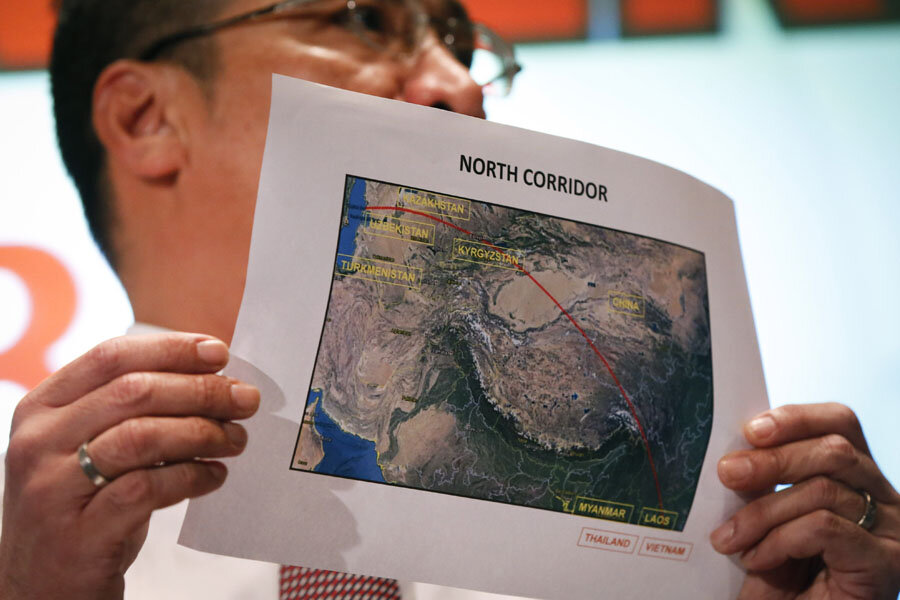Malaysia muddles timing of MH370 data tracking shutdown
Loading...
| Kuala Lumpur, Malaysia
A key detail in the investigation into the disappearance of Malaysia Airlines Flight 370 has been thrown into doubt after the airline chief said it was not clear exactly when the plane’s tracking system was turned off.
Malaysian Transport Minister Hishammuddin Hussein had told reporters on Sunday that the plane's ACARS system – a satellite data-link – had stopped transmitting before someone in the cockpit said “alright, goodnight” in the last voice transmission from the cockpit to Malaysian air traffic control.
The suggestion was that the plot to divert the plane from its flight path to Beijing – and its subsequent rerouting – was already underway. It fueled suspicions of hijack or sabotage and that the pilot or co-pilot may have been responsible for turning off the ACARS before diverting the plane from its planned route.
Now Malaysia may be walking back that claim, adding to the sense of confusion that surrounds its zigzag investigation into what exactly happened to its missing jetliner.
Malaysia Airlines CEO Ahmad Jauhari told a press conference today that “we do not know when ACARS was switched off.” All that is known, he explained, was that the last ACARS transmission was received at 1:07 in the morning of March 8, and that the system sent no data half an hour later, when it was due to do so.
Malaysia's last voice contact with the plane came at 1:19. Mr. Jauhari said that “initial indications suggest that it was the co-pilot who spoke the last time.” The plane's transponder, which identifies a plane, stopped transmitting at 1:21.
But it's still unclear whether the ACARS system was turned off between 1:07 and 1:19, as Mr. Hishammuddin had indicated, or if the time frame was longer, and it was shut off between 1:07 and 1:37. Shortly after the last voice contact with the plane, it veered sharply westwards from its intended flight path to Beijing. It was detected by Malaysian military radar crossing the Malaysian peninsula but then disappeared over the Indian Ocean.
Satellite data suggests that the plane may have flown for as long as seven hours after it was last detected, though the data does not indicate the plane’s exact location. That evidence, and the fact that the plane followed a traditional navigational route for as long as radar could follow it, indicates that the Boeing 777 was being handled by somebody who understood the plane’s controls and navigation – either one or both of the pilots, voluntarily or under duress, or a passenger who had gained access to the cockpit.
No terrorist links found
Malaysian police chief Khalid Abu Bakar said on Sunday that both Malaysian and foreign intelligence agencies had studied the passenger list and “cleared all the passengers” of known links to terrorist organizations.
The search effort is now being focused on two corridors, one stretching from Indonesia towards the Antarctic and the other from Laos to the Caspian Sea. Twenty-six countries are now involved in the operation, Hishammuddin said, and Malaysia is asking all the countries over which the plane may have flown to share their radar and satellite information.
Hishammuddin, who is also Malaysia's defense minister, also revealed that police had visited the homes of the pilot and co-pilot as early as Mar. 9, the day after the plane disappeared, and had talked to their family members.
That contradicts what Malaysia's police chief told reporters Sunday. He had surprised observers by saying that police “did not see the necessity in the early stage” to investigate the possible involvement of the pilot, Capt. Zaharie Ahmad Shah or the co-pilot Fariq Hamid in their plane’s disappearance.






